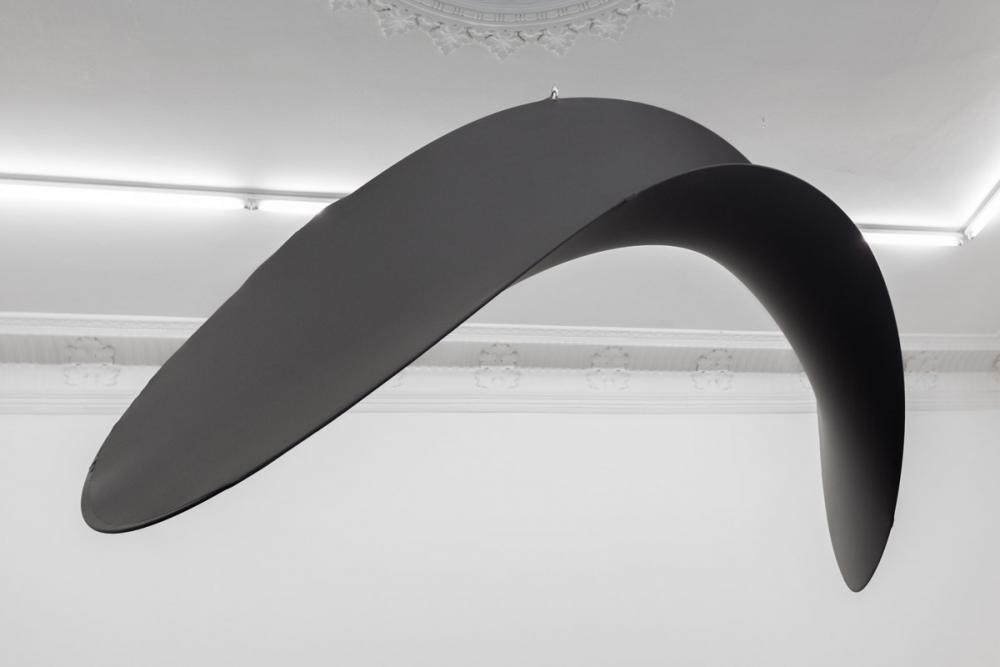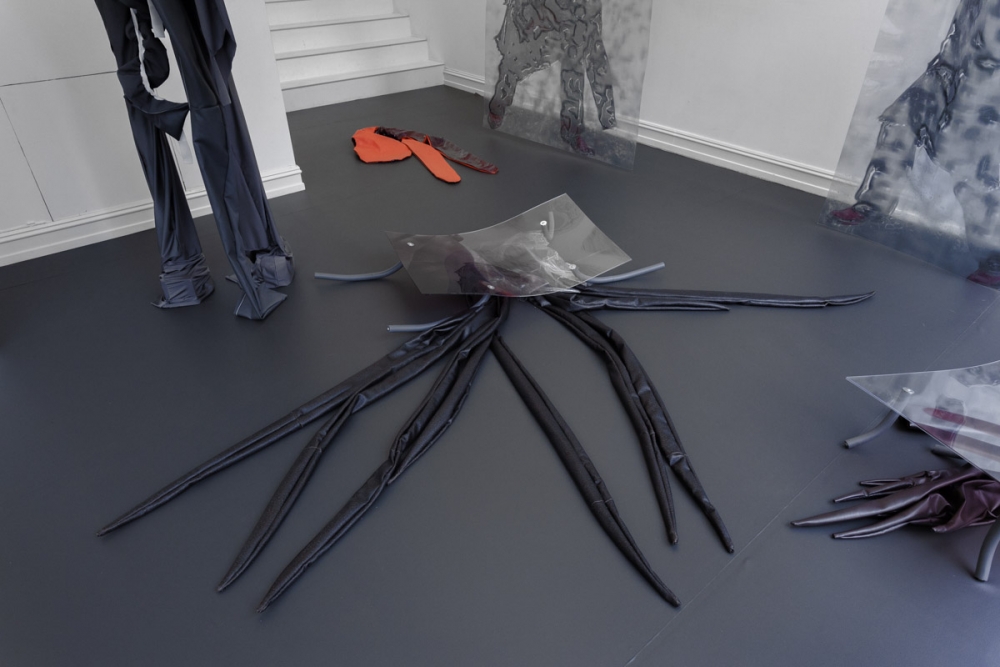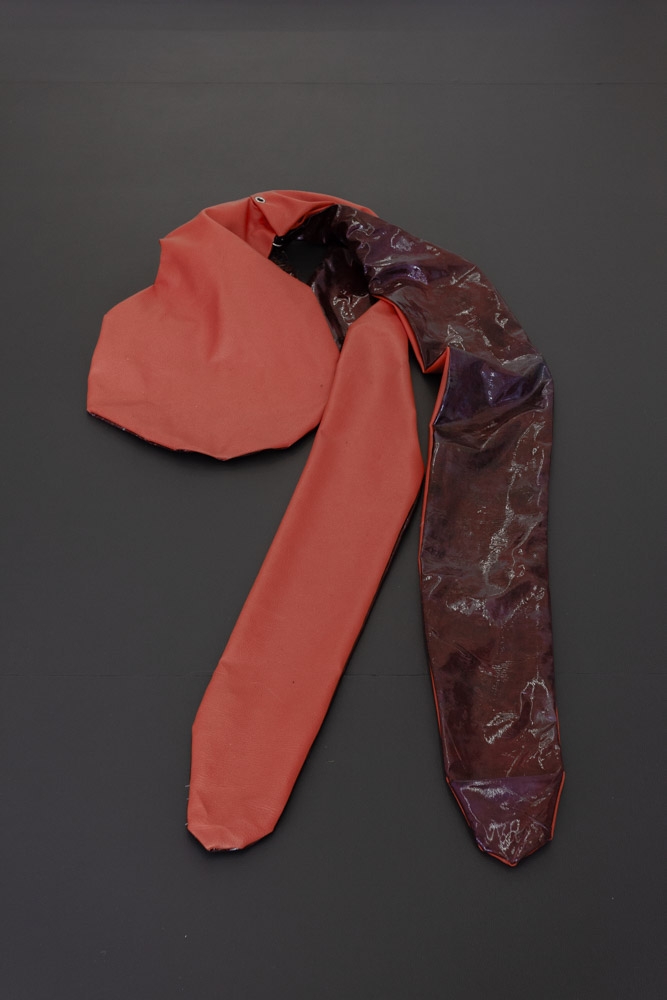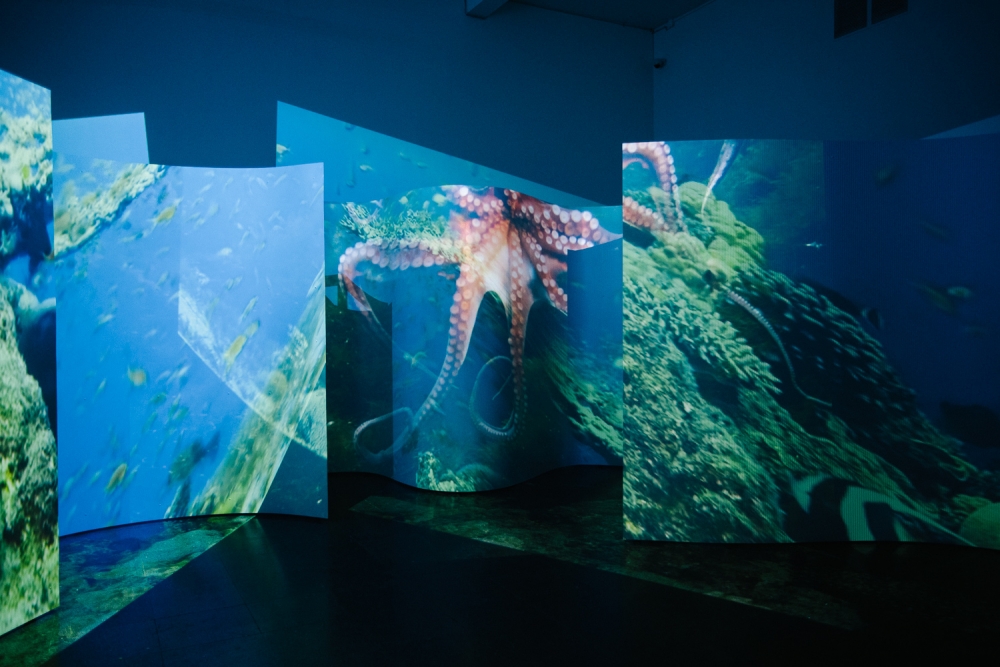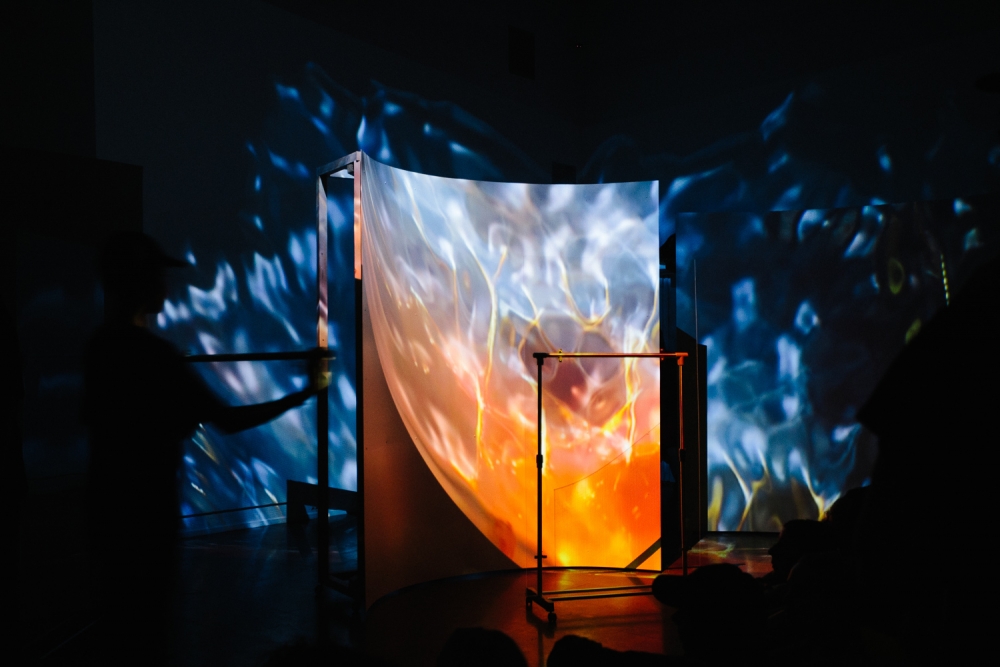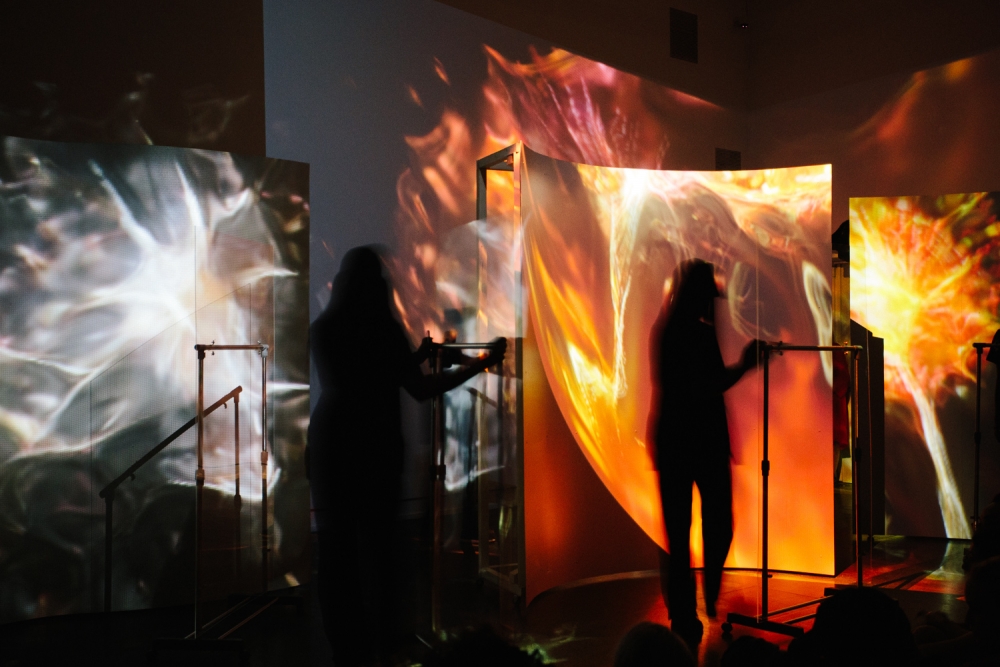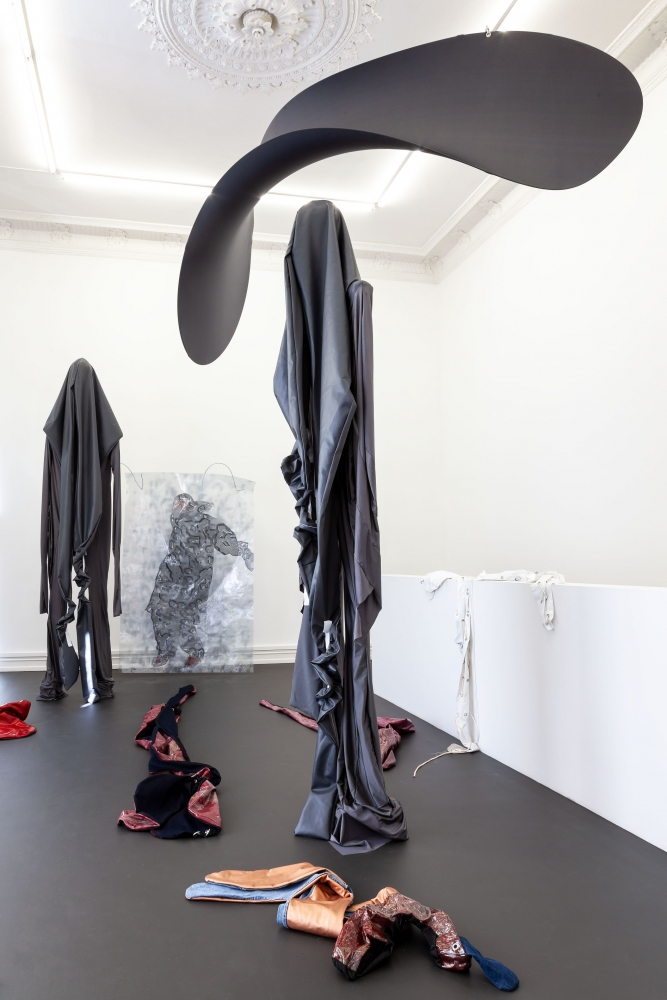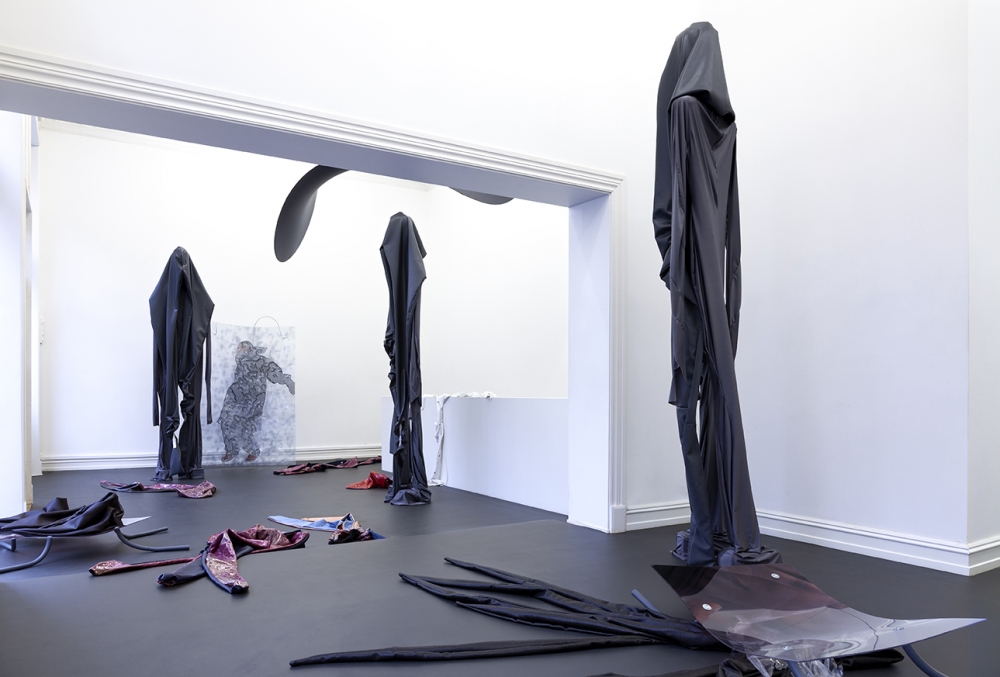Although it may not seem apparent upon first glance, the ostrich, octopus, and elephant make notable appearances in Sandra Mujinga’s latest exhibition, Hoarse Globules, running at Oslo’s UKS (Unge Kunstneres Samfund) from June 2 to August 26. Animal life hides in plain sight, blending in yet exerting its influence on the relative monochromatic greyness of the artist’s work. Most evidently, the supine sculpture ‘Octo Clutch/Temporary Home’ (2018) literally references the octopus’ slender tentacles. The nimble, adaptable octopus, gliding through water, features more emphatically in ‘Re-Imagining Things’, a video installation activated via performance by Mujinga and a select group of cultural practitioners at Kunstnernes Hus, also in Oslo, as part of the opening weekend of Hoarse Globules. Juxtaposed with psychedelic videos of fireworks, the octopus appears even more enigmatic.

More difficult to discern with the naked eye are the gargantuan, almost extraterrestrial, ostrich feet that Mujinga incorporated as a print on plexiglass in another floor work ‘Flightless’. Referring to the large bird’s ironic inability to fly, the work also highlights its hardy, intimidating stature, gesturing towards alternative survival mechanisms.
These animals are of interest to the artist because of their adaptability in the face of capture. On the African continent, elephants have been known to become nocturnal to evade poachers. The cerebral octopus can literally take on the appearance of its background, camouflaging itself infinitely in order to both hunt and escape. These animals’ survival strategies are contingent on the tensions between hyper-visibility and invisibility, power and sight. Likewise, a globule can be both highly disruptive and incognito.
Mujinga enacts these optical dynamics in the conceptualization, production, and dissemination of her work. Like the animals she references, she investigates how to “escape visibility in plain sight,” as articulated in her exhibition essay. For example, ‘Shed’ (2018), a 3D sculpture hanging from the ceiling, takes on a different guise at every angle. At some vantage points, it appears flat, while at others, its dimensionality seems almost hyperbolic. It appears to be in a state of constant metamorphosis, eluding visual apprehension. It should come as no surprise, then, that Mujinga was thinking of the rhetorics of visibility and surveillance when making this work. Here, elusiveness is a mute yet proactive method of survival.
‘Camouflage Waves 1-3’ look as vague and nebulous as their title suggests. They comprise three inkjet prints on film, onto which transparent PVC was subsequently ironed. For these prints, Mujinga took images of dancer and choreographer Adrian Blount in motion. In another print on plexiglass, Blount can be seen shielding her face with her hand from the camera’s aperture. Mujinga shores up Blount’s ephemerality and aversion through her textural treatment of ‘Camouflage Waves’, creating warped, blistered surfaces that make her body appear as if it were simultaneously bubbling into being and liquefying into nothingness.
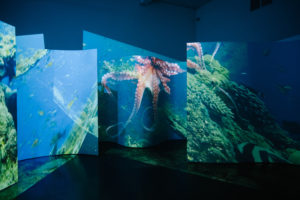
Three towering figures, ‘Touch-Face 1-3’ (2018), are the exhibition’s visual anchors. Hooded, yet measuring almost three meters in height, these grey portents appear somewhat unhinged and debilitated compared to their previous outing at the Tranen Contemporary Art Center in Copenhagen, Denmark. There, they had a more foreboding aura: standing taller, covered in an extra protective layer of fabric. At UKS, the additional armour has been stripped away, leaving the once-domineering figures in a state of languishing disarray. Lined with a slowly decaying glycerin and food mixture, the anthropomorphic giants seem to be reaching the end of their shelf lives.
Despite their perishable presence – fading away, hardly discernible, or else literally degenerating – Mujinga’s works actualize the pragmatism required for unconditional life. Over Skype, she describes her fabric works like ‘Shawl’, ‘Touch-Face’ and ‘Octo Clutch’ as “wearable sculptures.” Although unwieldy to some degree due to their outlandish shape or length, these works are meant to clothe and interact with bodies. Through them, Mujinga creates protective, practical skins to house, adapt to, and thus transform the composition and spectatorship of a body.
Writing about de-universalized nothingness and absence, cultural theorist Nana Adusei-Poku highlights the “variegated natures and particularity” of political organizing, underscoring their tactical fugitivity. Similarly, for Mujinga, survival can take on a multitude of forms. The artist’s recent body of work unearths the potential of shapeshifting to fit different socio-political demands and contexts, from social media platforms to real life encounters. For Mujinga, there is self-reflexivity and renewal, even in projections of reticence, concealment or complete withdrawal.**
This review is part of a collection of essays for Strategies for Survival, a forthcoming curatorial research publication by Wong Bing Hao.
